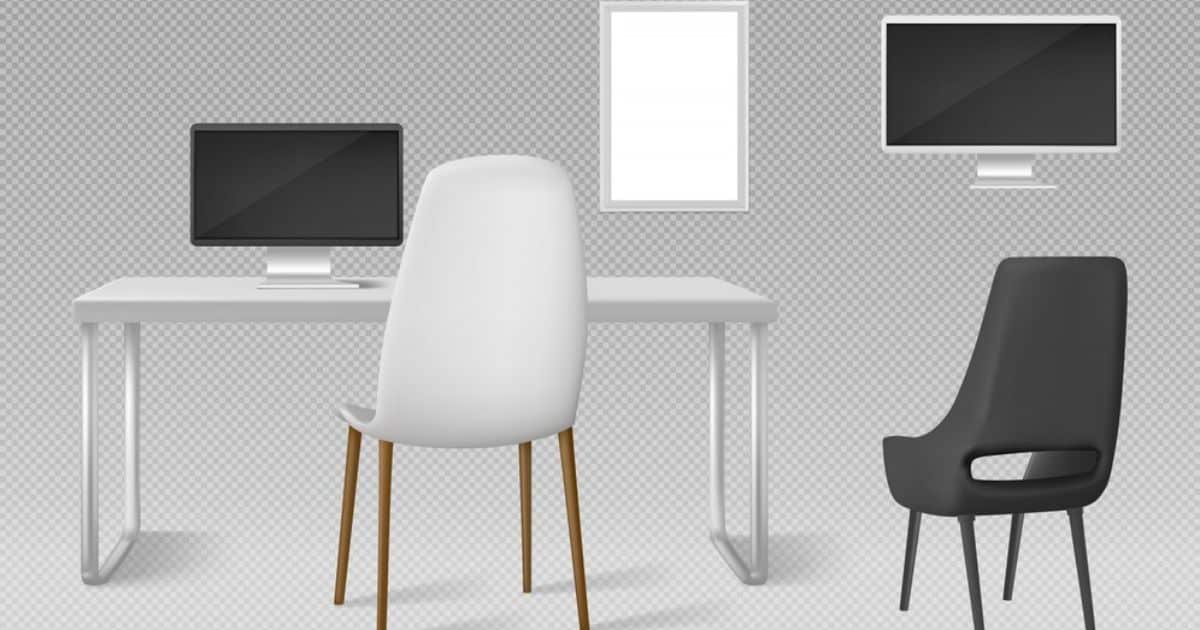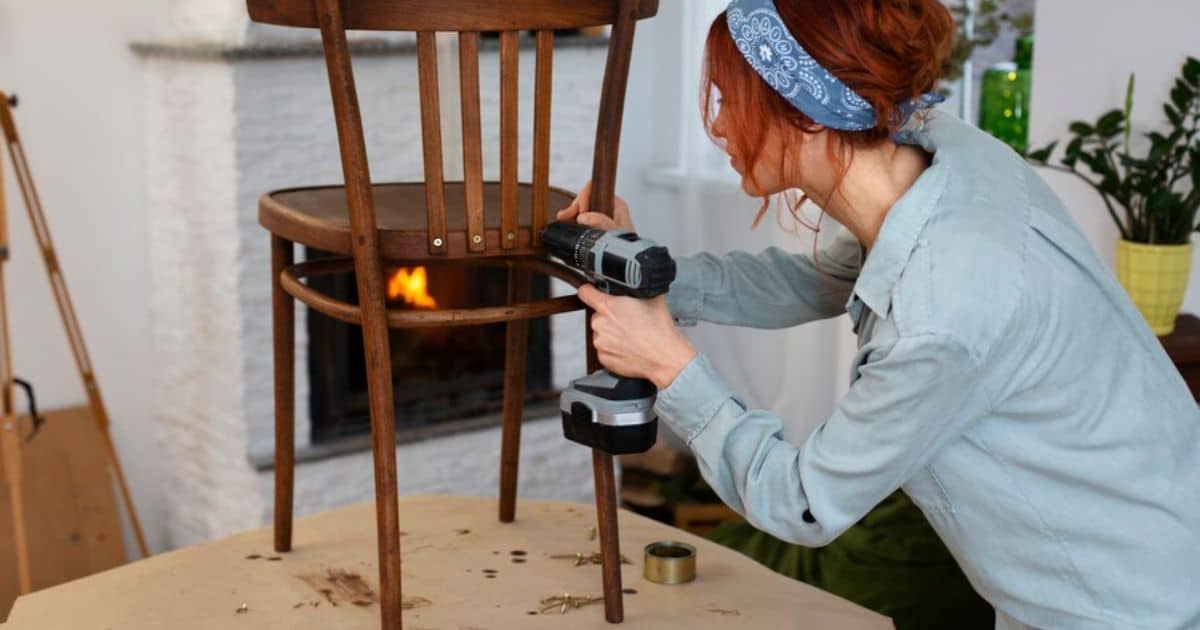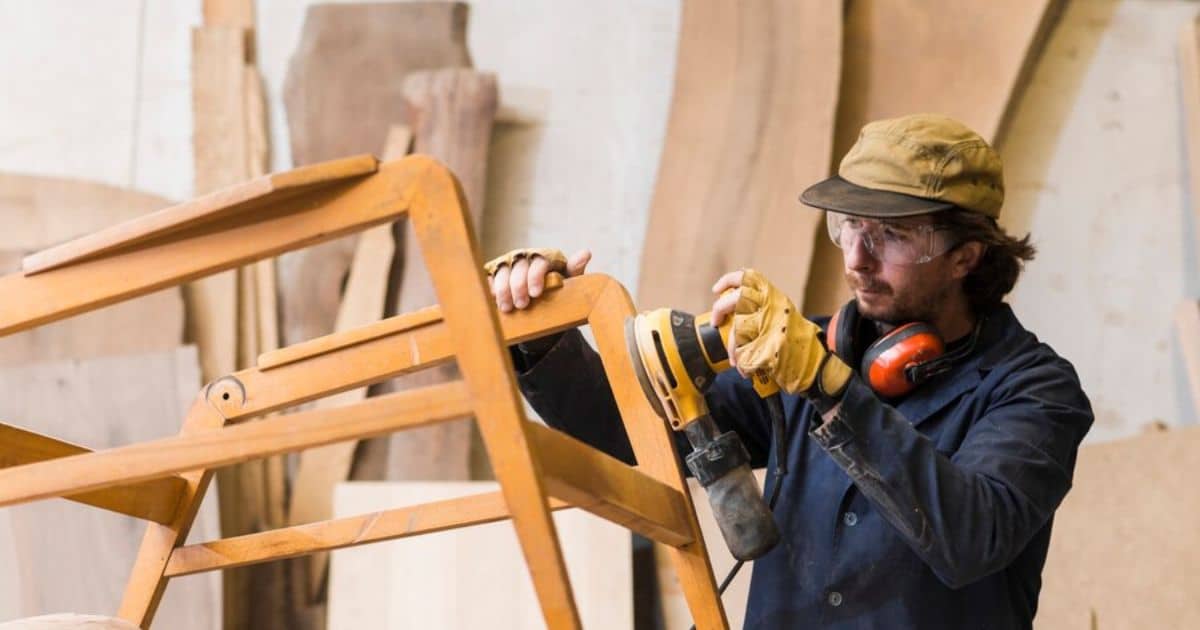Welcome to the Chair Construction Guide, where we delve into the intricate world of chair production. Like a master craftsman carefully selecting the finest materials, this article explores the diverse range of substances employed in chair manufacturing.
From the luxurious upholstery to the sturdy support materials, we examine the bases, steel and metal chairs, plastic chairs, wood chairs, as well as natural and manufactured materials. Join us on this enlightening journey, as we uncover the secrets behind every chair’s exquisite construction.
Key Takeaways
- Chairs can be made from a variety of materials including wood (oak, walnut, mahogany), metal (steel, aluminum), plastic, plywood, fiberglass, and acrylic.
- Upholstery materials for chairs include foam (high-density preferred), cotton, linen, leather, and polyester.
- Support materials used in chair construction include wood (oak, walnut), metal (steel, aluminum), foam, webbing, and springs.
- Chair bases can be made from wood (carved or shaped), metal (steel, aluminum), or plastic.
The Chair Construction Guide
When constructing a chair, it is important to follow a guide that outlines the proper steps and techniques to ensure a sturdy and well-built final product. The chair construction guide serves as a roadmap, providing detailed instructions on how to assemble each component and ensure their proper alignment. It starts with a list of necessary tools and materials, including screws, wood glue, and sandpaper.
The guide then proceeds to explain the step-by-step process of constructing the chair, from preparing the wood by cutting and shaping it, to connecting the different parts using the appropriate joinery techniques. Additionally, the guide may include tips on how to achieve a professional finish by sanding and applying a protective coat. Following the chair construction guide will ensure that the chair is built to last and provides a comfortable seating experience for its users.
Upholstery
During the final stage of chair construction, upholstery is applied to provide comfort and aesthetic appeal to the finished product. Upholstery refers to the soft padding and fabric coverings that are added to the chair’s frame. Here are three key components of chair upholstery:
- Padding: High-quality padding materials such as foam, cotton, or synthetic fibers are used to provide cushioning and support. The type and density of the padding can greatly affect the comfort of the chair.
- Fabric: A wide range of fabric options are available for chair upholstery, including cotton, linen, leather, and polyester. The choice of fabric depends on factors such as durability, style, and desired aesthetic appeal.
- Stitching and Finishing: Skilled craftsmen meticulously stitch the fabric to the chair frame, ensuring a neat and durable finish. Details such as piping, tufting, or decorative buttons can be added to enhance the chair’s visual appeal.
Support Materials

Support materials play a crucial role in ensuring the stability and structural integrity of a chair. These materials are responsible for providing a solid foundation and support to the various components of a chair. One of the most common support materials used in chair construction is wood. Hardwoods like oak, maple, and walnut are often used for their strength and durability. Metal support materials, such as steel or aluminum, are also utilized in chair manufacturing.
These metals offer excellent load-bearing capabilities and can withstand heavy use. Another popular support material is foam, which is used to provide cushioning and comfort. High-density foam is often preferred for its ability to maintain its shape and provide long-lasting support. Lastly, webbing or springs are frequently used to provide additional support and improve the chair’s comfort level. These support materials work together to create a stable and reliable chair that can withstand regular use and provide a comfortable seating experience.
Bases
The base of a chair is typically made from a sturdy material such as wood, metal, or plastic. The choice of base material can greatly impact the stability and durability of the chair. Here are three common types of chair bases:
- Wood: Wooden chair bases are often made from solid wood or plywood. They are known for their strength and natural beauty. Wood bases can be carved or shaped into various designs, providing a timeless and elegant look.
- Metal: Metal chair bases are commonly made from materials like steel or aluminum. They offer excellent support and durability, making them suitable for heavy-duty use. Metal bases can be painted or coated to enhance their appearance and protect against corrosion.
- Plastic: Plastic chair bases are lightweight, affordable, and easy to clean. They are often made from materials like polypropylene or polycarbonate. Plastic bases can be molded into different shapes and colors, offering versatility in design and style.
When choosing a chair, consider the base material that best fits your needs in terms of aesthetics, strength, and maintenance.
Steel and Metal Chairs

Steel and metal chairs are commonly constructed using a combination of strong and durable materials such as stainless steel, iron, or aluminum. These materials are chosen for their ability to withstand heavy use and provide stability and support to the chair structure. Stainless steel is resistant to corrosion and rust, making it ideal for outdoor or high-moisture environments. Iron is known for its strength and durability, making it a popular choice for industrial-style chairs.
Aluminum is lightweight yet sturdy, making it suitable for both indoor and outdoor settings. These materials are often combined with other components such as upholstery or cushioning to provide comfort and style. Steel and metal chairs are a popular choice for various settings, including homes, offices, restaurants, and outdoor spaces, offering a sleek and modern aesthetic while ensuring durability and longevity.
Plastic Chairs
Constructed using molded plastic, plastic chairs offer a lightweight and versatile seating option for various environments. Here are three key features that make plastic chairs popular among consumers:
- Durability: Plastic chairs are known for their durability, as they are resistant to scratches, stains, and moisture. This makes them suitable for both indoor and outdoor use, ensuring longevity and ease of maintenance.
- Affordability: Plastic chairs are often more budget-friendly compared to other materials. This makes them an accessible option for individuals and businesses looking to furnish spaces without breaking the bank.
- Design variety: Plastic chairs come in a wide range of designs, colors, and styles, allowing individuals to find the perfect match for their aesthetic preferences. From sleek and modern to retro and quirky, there is a plastic chair design to suit every taste.
With their practicality, affordability, and design options, plastic chairs have become a popular choice for many. However, for those seeking a more traditional and timeless seating option, wood chairs provide a classic appeal that will be discussed in the subsequent section.
Wood Chairs
One of the most popular choices for seating options is the use of wooden chairs, which offer a timeless and elegant appeal to any space. Wood chairs have been used for centuries and continue to be a preferred choice due to their durability, versatility, and natural beauty. Various types of wood, such as oak, mahogany, and maple, are commonly used to make these chairs.
The choice of wood affects not only the chair’s aesthetic appeal but also its strength and longevity. Wood chairs can be crafted in different styles, from classic designs to modern and contemporary ones, providing a wide range of options for different interior styles. Whether used in dining rooms, offices, or living spaces, wooden chairs add warmth, sophistication, and a sense of belonging to any environment.
Natural Materials

Natural materials, such as bamboo, rattan, and jute, offer sustainable and eco-friendly options for chair construction. These materials not only provide a unique and natural aesthetic but also contribute to the overall well-being of the environment. Here are three natural materials commonly used in chair manufacturing:
- Bamboo: Known for its strength and durability, bamboo is a fast-growing and renewable resource. It is lightweight and resistant to moisture, making it an excellent choice for outdoor furniture.
- Rattan: Derived from the rattan palm, this flexible material is commonly used in wicker furniture. Rattan is known for its durability and natural beauty, adding a touch of warmth and elegance to any space.
- Jute: Jute fibers are derived from the jute plant and are commonly used to make upholstery fabric. This natural material is biodegradable and offers a soft and comfortable seating option.
Manufactured Materials to Make a Chair
Several commonly used manufactured materials offer durability and versatility for chair construction. One such material is plywood, which is made by gluing together multiple layers of thin wood veneers. Plywood is known for its strength and stability, making it a popular choice for chair frames. Another commonly used manufactured material is plastic, which can be molded into various shapes and sizes.
Plastic chairs are lightweight, easy to clean, and resistant to moisture and stains. Additionally, metal is a popular choice for chair construction, with materials such as aluminum and steel offering strength and durability. Metal chairs are often used in outdoor settings due to their resistance to weather elements. These manufactured materials provide an array of options for chair construction, ensuring that chairs can be made to suit various needs and styles.
FAQ’s
Are There Any Alternative Materials Used to Make Chairs Other Than the Ones Mentioned in the Article?
There are indeed alternative materials used to make chairs, aside from the ones mentioned in the article. These materials can include recycled materials like plastic, metal alloys, reclaimed wood, and even unconventional options like bamboo or fabric.
How Can I Know if a Chair Is Made of High-Quality Materials?
To determine if a chair is made of high-quality materials, one should consider factors such as the type of wood or metal used, the craftsmanship, and the durability of the materials. Attention to detail and reputable brands can also be indicators of quality.
What Are the Advantages and Disadvantages of Using Natural Materials in Chair Construction?
Natural materials in chair construction offer advantages such as durability, sustainability, and aesthetic appeal. However, they may be more expensive, susceptible to weathering, and require additional maintenance. Careful consideration of these factors is essential when using natural materials in chair manufacturing.
Are There Any Specific Safety Standards or Regulations for Chair Materials?
There are specific safety standards and regulations for chair materials, ensuring that they meet certain criteria for strength, stability, and fire resistance. These standards aim to protect consumers and provide guidance for manufacturers in producing safe and reliable chairs.
Can Chairs Made of Manufactured Materials Be Recycled at the End of Their Lifespan?
Chairs made of manufactured materials can be recycled at the end of their lifespan, contributing to environmental sustainability. By utilizing advanced recycling techniques, such as breaking down the materials into their base components, these chairs can be repurposed for future use.
Conclusion
In conclusion, chairs can be constructed using a variety of materials, each offering unique benefits and aesthetics. For example, wood chairs provide a natural and warm feel, while steel and metal chairs offer durability and modern appeal. Plastic chairs are lightweight and easy to clean, making them ideal for outdoor use. The choice of materials ultimately depends on the desired style, functionality, and budget of the chair.








